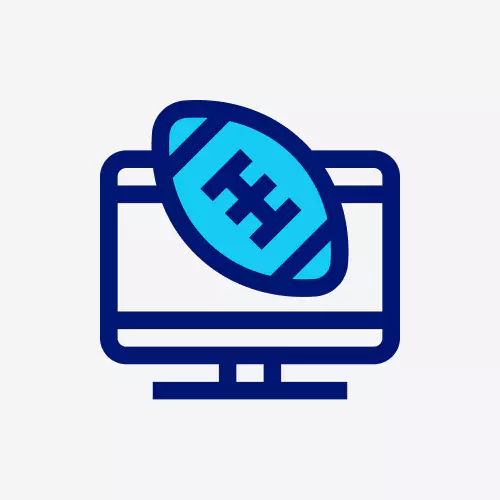
Planning to build or expand your online casino? The right game portfolio is key to standing out in the crowded market. Players today are spoiled for choice—they want variety, exciting features, and an overall seamless experience. That’s where a casino games portfolio checklist becomes crucial.
Without a clear plan, it’s easy to miss essential details that drive player engagement. This can result in low retention, poor revenue, and an overall stagnant platform.
This blog is your solution. It will provide you with a step-by-step casino games portfolio checklist that covers everything you need. From game selection to key features and development tips, you’ll find everything here to create a portfolio that attracts and retains players.
Let’s dive in!
Why a Diverse Casino Games Portfolio is Crucial
Competition is heating up as the online gambling industry surges from $88.65 billion in 2023 to $137.26 billion by 2028. For online casino operators, the game offerings are no longer just about variety. They are essential for survival in a market growing at 9.1% annually.
A well-rounded casino games portfolio can help you attract a diverse player base. It’s not just about having more games; it’s about having the right mix to keep different types of players engaged. From traditional card games like poker and blackjack to innovative slots and live dealer experiences, your portfolio should cater to everyone.

With so many options available, it’s important to follow a strategic casino games portfolio checklist that ensures you’re covering all the bases. In the next sections, we’ll break down exactly what you need to create a portfolio that drives long-term engagement and boosts revenue.
And if you ever need expert advice, Source Code Lab can guide you through custom development solutions that fit your needs. Learn more about custom game development and how it can set your platform apart.
Now, let’s get into the core components of a strong casino portfolio.
Understanding the Key Components of an Online Casino Games Portfolio
Before diving into game selection, it’s crucial to understand the main components that power your online casino. These elements provide the foundation for a smooth player experience. Let’s take a closer look.
- Casino Lobby: The Central Hub
The casino lobby is where players explore your game offerings. Think of it as the “homepage” of your casino. Here’s what makes a lobby effective:
Easy navigation, allowing players to quickly find popular or new games.
Clear categories for slots, table games, and live dealer options.
Personalized game recommendations to boost engagement.
A cluttered or confusing lobby turns players away. Make sure it’s clean, responsive, and intuitive. Learn more about lobby design from insights shared by developers on Reddit, where they discuss balancing technical and user experience.
- Player Zone: Personalizing the Experience
The player zone is where users get a tailored gaming experience. This is important for building long-term loyalty. Key features include:
- A dashboard where players can track their achievements.
- Options to update preferences and gaming history.
- Responsible gaming tools to promote healthy gaming habits.
By offering personalized interactions, your player zone keeps users engaged and happy.

- Gaming Engine: Powering Seamless Gameplay
The gaming engine is the backbone of your casino. It ensures smooth gameplay and fair results. Here’s what a strong gaming engine does:
- Runs on top-tier software (Unity, Unreal) for high-quality visuals.
- Uses Random Number Generators (RNG) for fair outcomes.
- Works across all devices—mobile, tablet, and desktop.
The gaming engine’s performance is vital. Slow games or crashes? Players won’t stay long. Source Code Lab can help you with custom game development solutions to ensure your engine is optimized for all platforms.
- Cashier for Transactions: Fast and Secure Payments
The cashier system handles deposits, withdrawals and ensures secure transactions. For a smooth experience, it should offer:
- Multiple payment methods, including credit cards, e-wallets, and cryptocurrencies.
- Fast processing times for deposits and payouts.
- Built-in compliance with KYC (Know Your Customer) and AML (Anti-Money Laundering) protocols to prevent fraud.
No one likes payment delays. A well-functioning cashier keeps players happy and the gaming going. For a complete payment guide, check out Top iGaming Payment Methods and Solutions in 2024.
How to Develop an Engaging Casino Games Portfolio
Developing a casino games portfolio goes beyond just picking popular games. It’s about making strategic decisions that reflect your brand and the type of experience you want to create for your players. Each game you include should serve a purpose, whether it’s catering to a specific type of player or enhancing the overall engagement of your platform.
This section will guide you through a casino games portfolio checklist that will help you decide which games are must-haves and why they matter.
Step 1: Define the Core Games for Your Casino Portfolio
Choosing the right mix of games is critical to building a portfolio that delivers both variety and excitement. Here’s a practical breakdown of what to include:
A. Slot Games: The Core of Any Portfolio
Slot games are essential for your casino portfolio. But it’s not just about offering as many as possible. You need slots that appeal to different types of players.
- Classic Slots: These are perfect for casual players who want straightforward, nostalgic gameplay.
- Progressive Slots: Players who chase big wins are drawn to these slots with the potential for massive jackpots.
- 3D Slots: These offer an upgraded visual experience and are great for players seeking modern, interactive gameplay.
- Virtual Reality Slots: An innovative option that provides an immersive experience for the more tech-savvy audience.
B. Table Games: Strategy and Excitement
Table games add depth and variety to your portfolio, offering something for both casual players and those who enjoy more strategic gameplay.
- Blackjack: A versatile favorite, with multiple variations like Classic and European Blackjack that appeal to all skill levels.
- Roulette: With different versions such as European and American, it attracts both seasoned players and newcomers.
- Baccarat: Known for its simplicity and fast pace, it attracts both high rollers and casual gamers.
To create customized roulette & blackjack experiences contact Source Code Lab today.

C. Live Casino Games: Real-Time Interaction
Live dealer games bring the feel of a real casino to your players, enhancing the overall gaming experience.
- Live Poker: Offers a competitive edge with real-time interactions, great for players looking to test their skills.
- Live Roulette and Blackjack: These games recreate the excitement of a physical casino, appealing to players who enjoy immersive, live-action games.
D. Specialty Games: Adding Variety to Your Portfolio
Specialty games are a great way to offer something different to your players, especially those looking for quick and casual play.
- Scratch Cards: Simple and fast, these games appeal to players seeking instant results.
- Bingo and Keno: These games offer larger-scale winnings, appealing to players who enjoy simple, lottery-style games.
If you need further assistance in designing or expanding your game portfolio, checkout this guide on iGaming consulting services tailored to your needs.
Step 2: Ensure Key Features are Included in Every Game
It’s not just about having a variety of games in your portfolio; it’s about delivering an experience that keeps players engaged and builds trust. Below are the must-have features that elevate gameplay and strengthen player loyalty.
A. Consistent Branding Across Games
Each game should reflect your casino’s identity. This creates familiarity and trust with players. Branding consistency helps players recognize your platform, encouraging loyalty.
Use custom themes, logos, and color schemes in every game. Subtle branding elements like unique sound effects can also reinforce your casino’s image without disrupting the game.
For a deeper dive into creating a consistent gaming experience, check out this guide on building a branded game platform.
B. High-Quality Graphics & Animations
Visuals are crucial in online gaming. Attractive, high-quality graphics grab attention and enhance the gaming experience. Smooth animations make gameplay feel seamless and premium.
Work with skilled designers to create vibrant, detailed visuals that don’t slow down the game. Make sure animations run smoothly, especially on mobile devices, where many players access casino games.
C. Flexible Gameplay Modes
Players enjoy having options. Some like short, quick games, while others prefer longer sessions. Offering flexibility increases appeal.
Design games that cater to different play styles. For example, include turbo modes for quick spins or deeper play modes for more strategic gameplay. This variety keeps players engaged on their terms.
For insight on tailoring gameplay, see this overview of top 10 game development companies for inspiration on standout features.
D. RNG (Random Number Generator)
Fairness is the backbone of any online game. An RNG guarantees that outcomes are random and fair. Trust is everything. Players need to know that every outcome is fair and not rigged.
Ensure every game uses a certified RNG system. Regular audits can help maintain fairness and build long-term trust with players.
Each of these features—branding, visuals, gameplay flexibility, and fairness—are crucial elements of your casino games portfolio checklist. By including these features, you’ll build a portfolio that not only attracts players but keeps them engaged and coming back.
Step 3: Plan the Development Process
To bring a casino game from idea to launch, you’ll want a clear, structured approach. Here’s how to go through the process, one stage at a time.
A. Idea Generation & Concept Planning
- Start with brainstorming sessions. What would grab your target audience’s attention? Think about game themes, features, or mechanics they’d love. This is where creativity meets player insight, setting the stage for a game that truly connects with your audience.
For a broad understanding of iGaming options and to spark ideas, consider reading What is iGaming services? A Complete Overview.
B. Market Research
Next, dive into the market. Look at what’s trending, what players are excited about, and where competitors may be falling short. Find those gaps—untapped themes or features that could set your game apart. Knowing the market gives you a big advantage.

C. Wireframing & Prototyping
With ideas in place, it’s time to sketch out your game. Wireframe the basics: layout, main elements, and how players will interact with them. Then, create a quick prototype to get a feel for the game flow. This early model helps you see what’s working and what might need tweaking.
D. Testing & Iteration
Finally, put your game to the test. Rigorous testing is essential to catch bugs, polish gameplay, and make sure everything runs smoothly across devices. Gather feedback, make improvements, and repeat until the game is solid. Each round of testing makes your game stronger and more reliable.
Pro Tip: Wondering how much to budget for the development process? Check out the cost to develop a real money game for a detailed breakdown.
Following these steps keeps your development process organized and efficient. Now, let’s look at the features that make each game in your portfolio truly engaging for players.
Step 4: Must-Have Game Mechanics for Player Engagement
To make your casino games portfolio truly engaging, focus on core mechanics that keep players entertained and invested. Here’s a quick breakdown of essential mechanics to include:
A. For slot games, paylines, wilds, and scatters are must-haves. Paylines offer multiple ways to win, wild symbols create surprise wins, and scatters often activate bonus features, adding anticipation to each spin.
B. Free spins and bonus rounds are also powerful engagement tools. Free spins give players extra rounds without added cost, while bonus rounds introduce mini-games that break the routine, offering fresh rewards.
C. For players who enjoy higher stakes, multipliers and gamble features add thrill. Multipliers boost winnings, while gamble features let players risk current rewards for a chance to double or triple them, turning gameplay into an exciting challenge.
D. In live games like poker or blackjack, live dealer interaction brings a realistic casino feel. A live dealer offers real-time interaction and a social experience that traditional online games often lack, making players feel more connected to the action.
Incorporating these mechanisms ensures your games stay engaging and memorable for players. If you’re interested in integrating immersive gaming elements, check out our specialized Fantasy Sports App Development service, which includes engaging live and fantasy features.
Now, let’s focus on expanding your reach to a global audience.
Step 5: Optimize for a Global Audience
Reaching a global audience means thinking beyond borders and adapting your games to suit players’ diverse needs.

Simple strategies like offering multiple languages, accepting various currencies (including crypto), and ensuring smooth cross-device play can make a big difference. Localization is also key—adapting game themes and styles to fit regional tastes creates a more immersive experience for players worldwide.
Here’s how these strategies make an impact:
- Language and Currency Options: Players feel at ease and more willing to engage when they can use familiar languages and currencies.
- Cross-Device Compatibility: A seamless experience across mobile, tablet, and desktop keeps players engaged, no matter their device.
- Localized Themes and Gameplay: Tailoring visuals, sounds, and gameplay to regional preferences builds a stronger connection with players.
Optimizing for global reach transforms your games from just another option to a truly player-centered experience. For a closer look at which regions are leading in online gambling, take a look at What States is Online Gambling Legal?.
Now, let’s talk about how to effectively launch and market your portfolio.
Step 6: Launch and Market Your Games Effectively
Launching your casino games portfolio goes beyond making it available online. It’s about connecting with your audience, building strategic partnerships, and maintaining a fresh brand. Here’s how to do it:
A. Understand Your Audience
- Knowing who your players are is essential. Dive into their interests and behaviors using tools like market research and psychographic insights. This lets you shape marketing messages that genuinely resonate.
B. Build Strong Affiliate Partnerships
Affiliates can help expand your reach quickly. Offer appealing commission structures—like revenue shares or CPA deals—and provide them with creative assets, from banners to social posts. When affiliates have the tools they need, they can effectively promote your games to a wider audience.

C. Keep Your Brand Engaging
Launch day is only the start. Keep players excited by updating games regularly, adding features, and introducing loyalty programs or special events. This continuous growth keeps your brand competitive and players coming back.
With these strategies, your launch will be strong, and your games will keep players engaged long after. Learn more about what makes brands stand out in the iGaming world with our blog on Betting Software Technology Solutions for Virtual Sports.
Build a Portfolio That Stands Out with Expert Help
Building a successful casino game portfolio is all about creative ideas, engaging features, and a solid launch plan. Here’s a quick recap:
- Innovative Ideas: Develop concepts that resonate with your audience.
- Engaging Mechanics: Include features like paylines, free spins, and live dealers to keep players invested.
- Global Optimization: Offer multi-language support, multiple currencies, and device compatibility.
- Strategic Marketing: Reach your audience through targeted campaigns and affiliate partnerships.
If it feels like a lot to handle, Source Code Lab can step in to make it easier. With expertise in every stage of casino game development, Source Code Lab can help you go from concept to launch, ensuring your games are not only functional but also captivating for players.
Book a demo today to see how they can turn your ideas into a standout casino portfolio.
FAQs
1. What types of games should be included in a casino game portfolio?
A well-rounded casino portfolio typically includes slot games (classic, progressive, 3D), table games (like blackjack and roulette), live dealer games, and specialty games such as scratch cards or bingo. This variety appeals to different player preferences.
2. Why is it important to offer multi-language and multi-currency support?
Supporting multiple languages and currencies makes your platform accessible to a global audience, improving player satisfaction and increasing engagement across regions.
3. How do affiliate marketing partnerships benefit an online casino?
Affiliate marketing helps expand your reach by allowing trusted partners to promote your games, often on a performance-based model. This drives more traffic to your platform and boosts player acquisition.


























